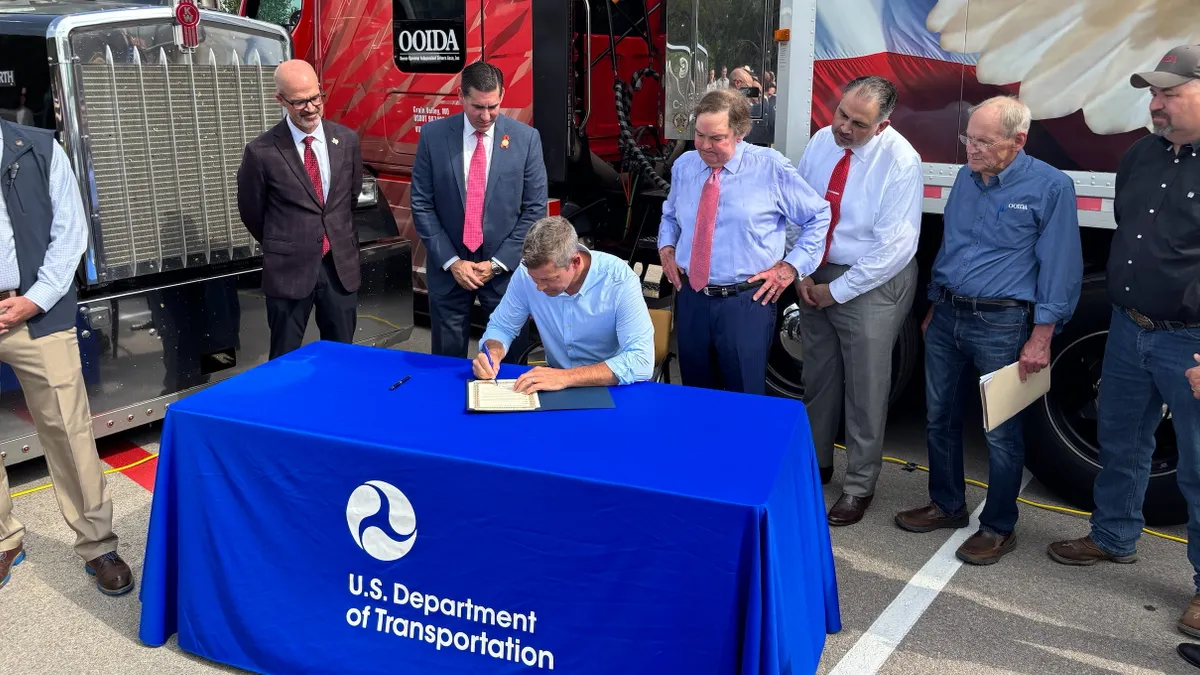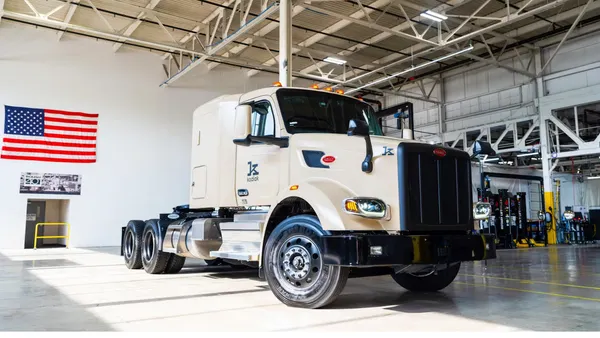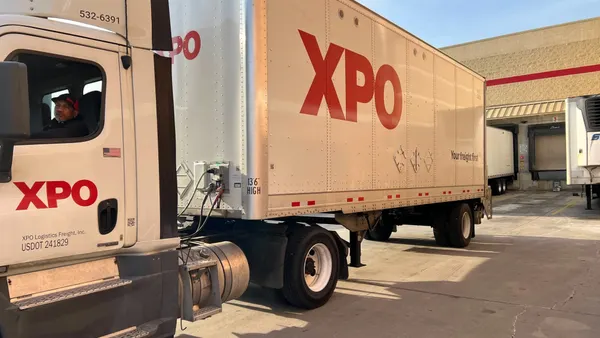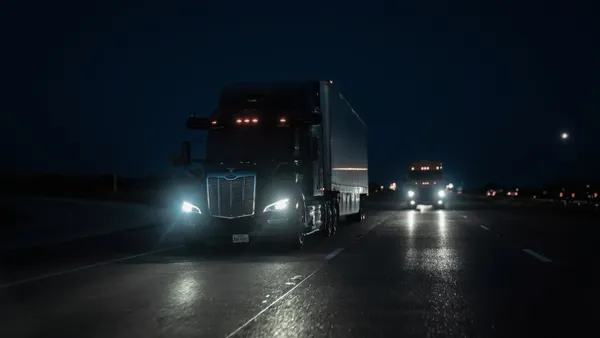Dive Brief:
- The National Highway Traffic Safety Administration reported fatalities in crashes involving at least one large truck showed almost no change last year, decreasing from 5,006 in 2018 to 5,005 in 2019. A large truck is defined as weighing 10,000 pounds or more.
- Overall traffic fatalities for the first half of 2020 were at 16,650 people, down 2% from the first half of 2019, according to data released Oct. 1.
- 2019 was the third-consecutive year in which traffic fatalities declined after reaching a recent high of 37,806 in 2016, the NHTSA said. But deaths of large-truck occupants increased 0.2% to 892 deaths, from 890 in 2018. NHTSA's numbers are 2019 data from the Fatality Analysis Reporting System and preliminary estimates for the first half of 2020.
Dive Insight:
Truck technology is often promoted as improving safety, but the latest NHTSA numbers do not show large improvement for the commercial vehicle industries.
Rishi Mehra, director of operations for safety technology company Trimble Maps, said he was disappointed there was not a decrease in the number of truck driver deaths in 2019. Mehra's company has been working to advance products that help drivers avoid troubled traffic areas or regions that are hard hit by inclement weather.
"Weather and traffic, those are the two key factors," said Mehra.
Other industry players noted that the advent of the ELD has not dropped driver fatalities. Norita Taylor, spokesperson for the Owner-Operator Independent Drivers Association, said it's "interesting that there isn't anything reported yet about how ELDs have made any meaningful changes to highway safety other than increases in compliance, but nothing about reducing crashes."
Taylor said the preliminary nature of the report makes it too soon to speculate. "It appears there isn’t enough information about commercial trucks to reach any conclusions just yet," said Taylor.
But others said safety technology will grow.
The nation's motor-vehicle fatality rate has decreased year after year, based on 100 million vehicle miles traveled. In 1975, according to the NHTSA, there were 44,525 traffic fatalities or 3.35 per 100 million VMT. In 2019, there were 36,096 fatalities, or 1.1 per 100 million VMT. Technology has helped improve safety over the years, and will continue to do as as the technology develops and fleets continue technology adoption.
"Technology is going to save countless lives in the future," said Chris Turner, director of enforcement and judicial outreach for the Commercial Vehicle Safety Alliance.
In the meantime, some industry observers also see tech as a blessing and a curse. The cell phone is one of the main concerns of industry officials.
"Mobile device distraction is substantially higher than it was before we went into the pandemic lockdown," said Joe Boyle, Truce Software CEO, speaking to Transport Dive in July.
Trucking firms use Truce software to set the policy around what types of apps drivers can use while the truck is in motion, and Truce automatically blocks alerts that are out of policy. As the pandemic went on, its software blocked more apps and texts message even as drivers spent fewer miles on the road, Boyle said.
"We still maintain that government standards to obtain a CDL should include behind-the-wheel training and more education is needed for the driving public to understand how to share the roads with trucks," said Taylor.
The debate on trucking safety often puts industry organizations at odds.
On Sept. 4, the FMCSA proposed and began seeking public comments on a pilot program to allow drivers ages 18-20 to operate commercial motor vehicles across state lines. The change is supported by the American Trucking Associations and other industry players.
The FMCSA is also mulling a pilot program to study the safety effects of allowing drivers a break that stops the 14-hour driving window. So far, public comments offer opposing views on how such a break would affect driver fatigue.










